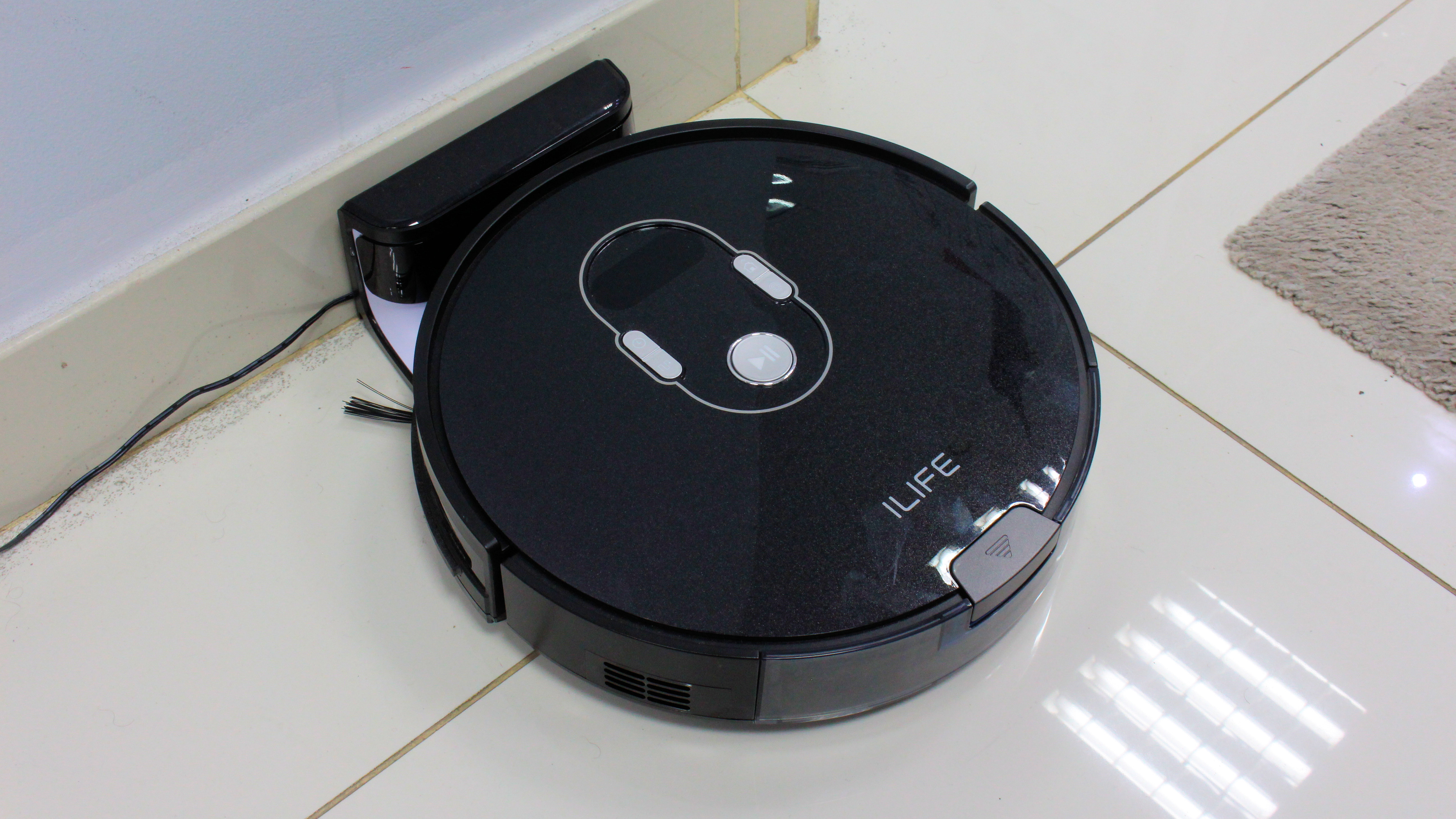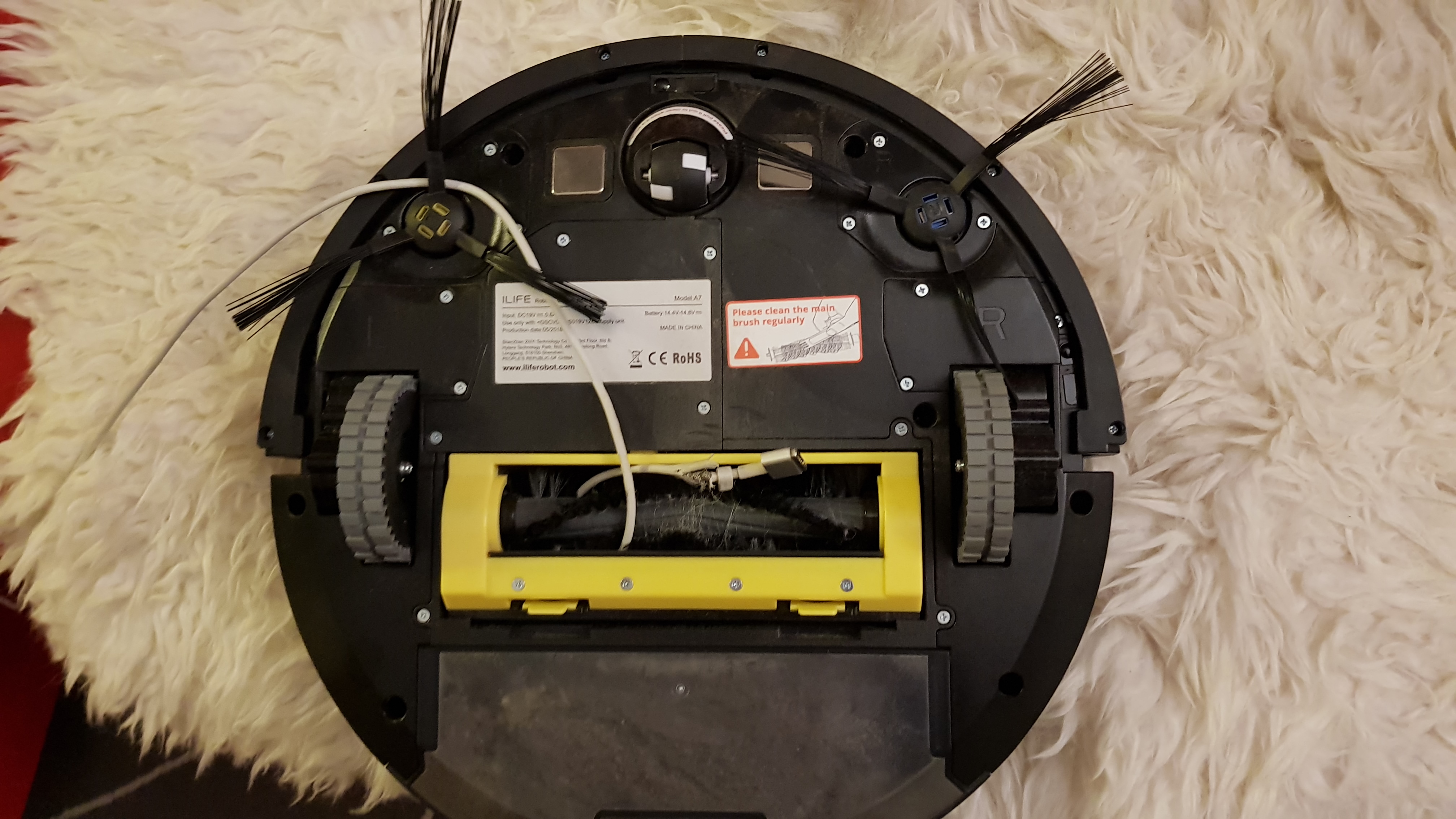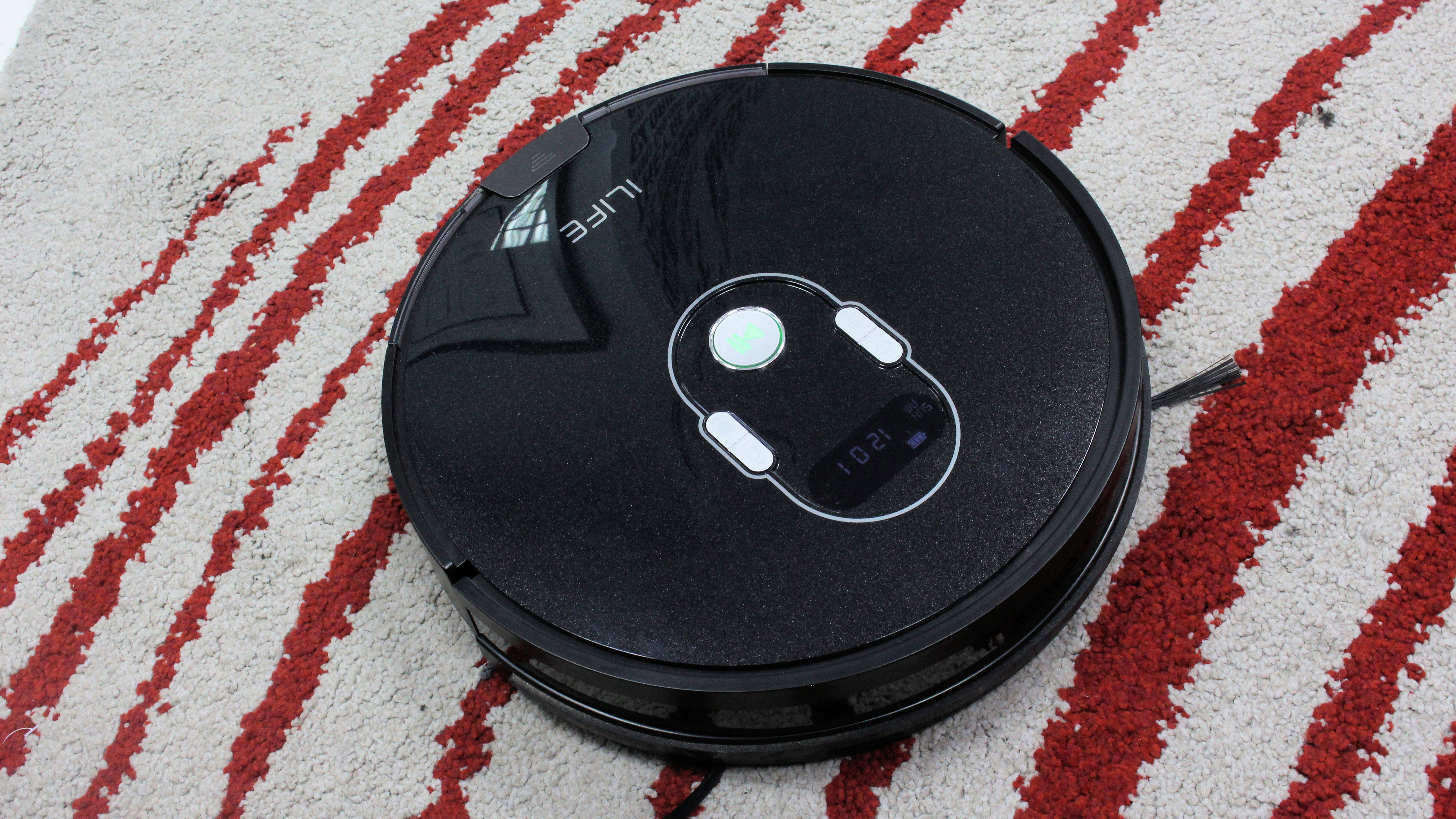Why you can trust TechRadar
Initial setup
Setting up the A7 is quite straightforward, but requires a little bit of prep. The docking station needs to have at least 1m of space on either side, and 2m of space in front of it. So tucking the A7 into a corner of your apartment isn’t going to work in its favor.
The user manual also advises you to cover any mirrors or reflective surfaces up to 15cm from the floor, presumably to avoid the A7’s navigation systems from being disrupted. You’ll also need to make sure that the dock is firmly placed against a wall, so that the A7 can properly dock when it needs to recharge.

You’ll need to leave the A7 to charge properly before its first use – we left it on the dock for a lengthy eight hours before the light turned green and it was ready for operation. Subsequent charges should take less time, as the A7 learns to clean your space more efficiently.
It’s important to point out that the A7 does have its own little power switch on the right hand side, which needs to be on in order for scheduled cleans to take place.

What’s supremely annoying about this is that if you switch the A7 off and turn it back on, it clears all cleaning schedules and the current time from its memory, so you have to reprogram these all over again.
Setting a cleaning schedule is thankfully not that complicated – just use the onboard buttons to cycle through the days of the week, and then adjust for which time you want the A7 to start cleaning. By default it will always clean in Auto mode – any other mode needs to be manually started via the remote control instead.
Cleaning performance
Our cleaning test involved running the A7 in a 600 sq ft studio, with furniture and most large obstacles moved out of the way. iLife recommends moving furniture such as dining room chairs or stools back to their original locations, so as not to confuse the A7’s navigation.
Sign up for breaking news, reviews, opinion, top tech deals, and more.
The A7’s sole purpose in life is to clean, and in that regard it does a fairly decent job. The bristle brush is good at digging into carpets to pull out flecks of dust or hair, while the rubber brush does a good job of sucking up things from hard floors. The A7 has a slightly lower profile than our Roomba, which allowed it to go underneath a couch without any problems at all – an area that the Roomba refuses to go under without getting stuck.
We definitely recommend turning on increased suction for thicker carpets, as the A7 wasn’t able to clean our rug properly on the normal suction setting. In fact, it hardly did any proper cleaning at all, so opt to keep the suction level on high for the best results.

You might notice that on occasion the A7 is very good at sweeping up dust, but forgets to actually collect it. We found a number of dust bunnies in various spots, which we then had to manually sweep up or send the A7 back for a second run.
While the A7 did go about its business as usual, there were some rather alarming surprises during the week. On the first unattended scheduled run, the A7 decided to suck up one of the slightly longer curtains in the living room, so we had to carefully untangle it and send it back to the dock for charging.
On another occasion it inhaled a loose MacBook charging cable which curled around the main brush and brought the A7 to a halt. Yet another time it somehow managed to wedge itself on an indoor laundry stand and couldn’t figure out how to back off it, so it just sat there with a sad beeping noise.
With a full week of scheduled cleaning, the A7 only managed to successfully complete three of those – the rest of the time we would discover it had sucked up something it shouldn’t have, or couldn’t find its way back to the docking station and had just given up.
Mapping your space
The A7 doesn’t have any in-depth mapping function, though iLife says that after a week’s worth of runs, the A7 will have a rough idea of where to go in your apartment. That didn’t seem to be the case in the two weeks that we tested it, since it seemed that every time it started cleaning, it would start up a new random cleaning pattern.
For quick cleaning there’s always the Point mode, which circles the A7 in a growing spiral before it retraces its path and comes to a halt. The Path and Border modes are best suited for spaces that don’t have a lot of furniture around, as the A7 bumped into far too many objects during our test runs.
What’s unfortunate with the A7 is that there’s no way to confine it to a particular area or room (unless you physically block it in). Roomba ships with their virtual wall, and newer models allow you to block off an area via an app, but there’s no such comfort here. Wherever you put the A7 down, it’s going to trundle off and explore of its own free will.
Current page: Setup, cleaning performance, and mapping technology
Prev Page Introduction, pricing & design Next Page App control, maintenance, and verdict
A former IT & Marketing Manager turned full time Editor, Nick enjoys reviewing PC components, 3D Printers, projectors, and anything shiny and expensive. He can also be found baking up a storm in the kitchen, which we are more than happy to encourage.
